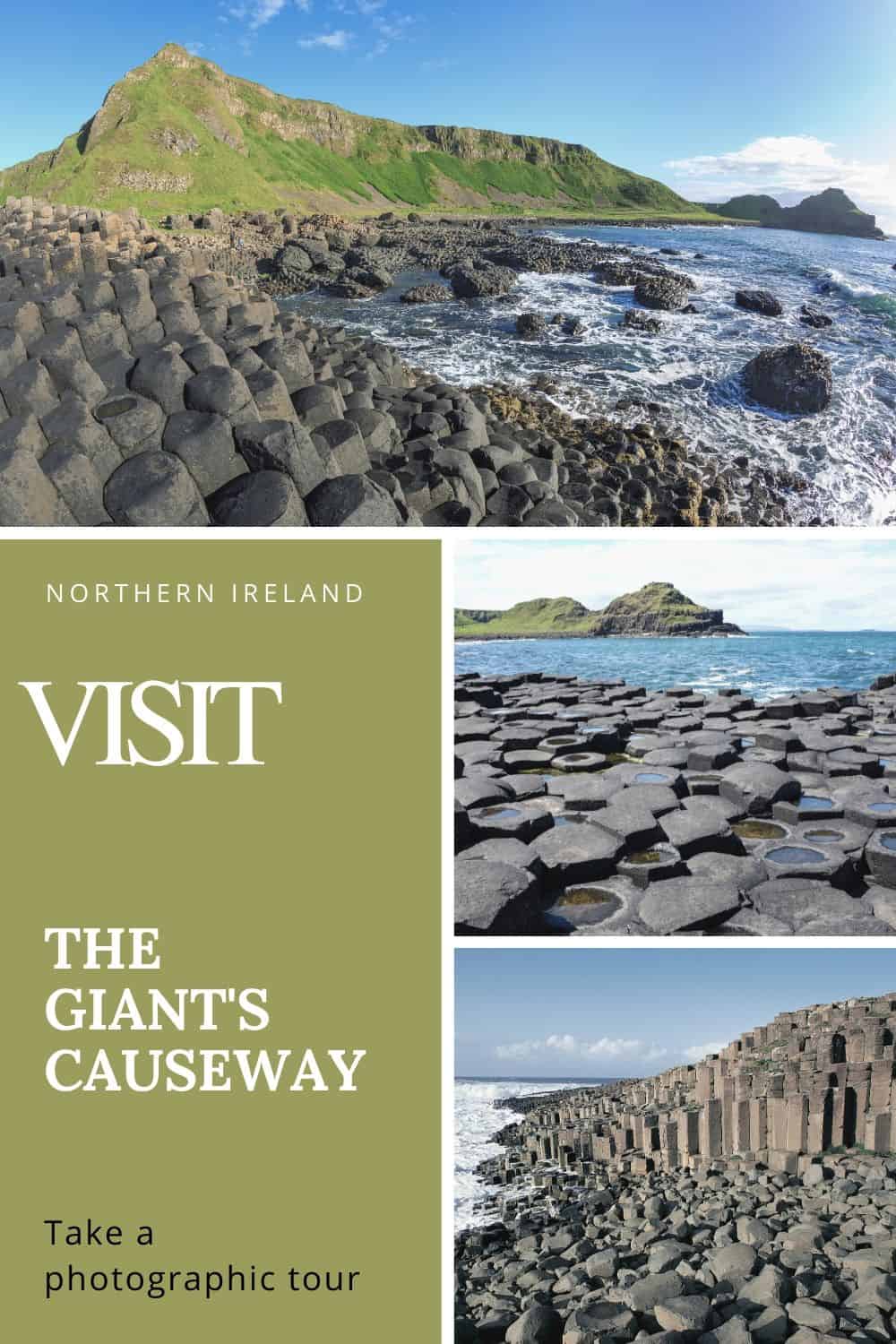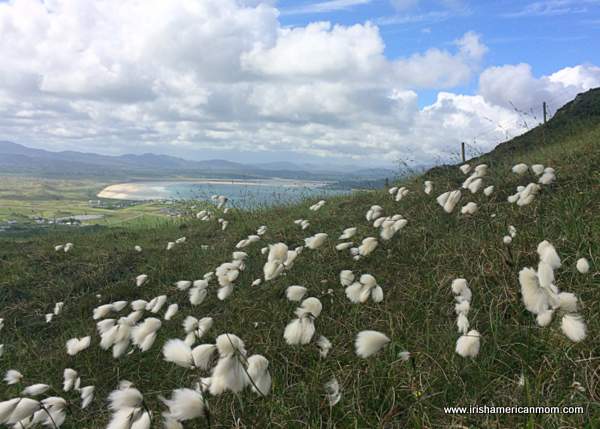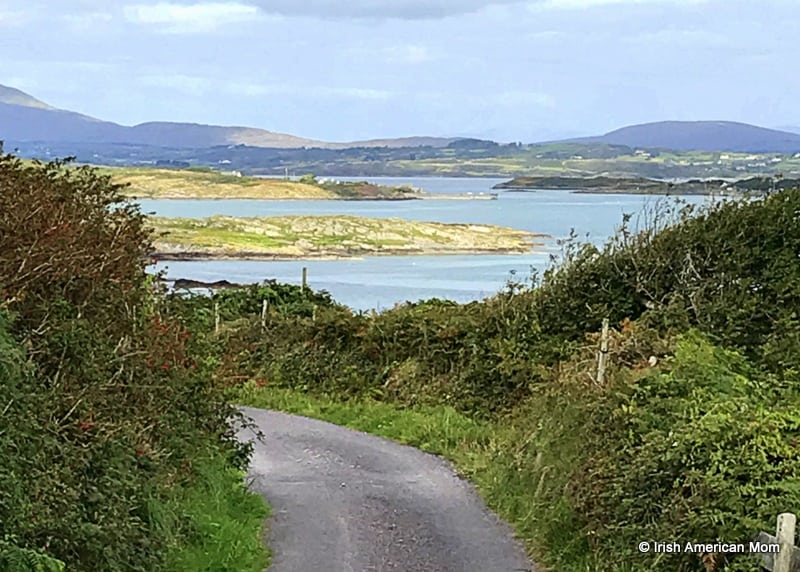The Giant's Causeway is an amazing geological wonder, which truly has to be seen to be believed.
The waters of the Atlantic Ocean crash ashore over hexagonal rock pillars, surrounded by a landscape of lofty cliffs.

Table of Contents
Location of the Giant's Causeway
Located amidst the magical splendor of the rugged County Antrim coastline in Northern Ireland, this jagged promontory of neatly stacked and packed rock columns, is completely alluring.

The Giant's Causeway is a rocky promontory of basalt columns. It stretches along the County Antrim coastline for about 4 miles.
It's only about 25 miles from the city of Derry. or Londonderry as it is also called. Coleraine lies about 12 miles to the south west of this natural wonder and Ballycastle is just 13 miles away.
It's only 2 miles from the village of Bushmills. Visitors can combine a trip to this amazing site with a stop at the world famous Bushmills Whiskey Distillery.
Accessed via the causeway coastal route or the causeway coast way, these oceanic stone pillars are the highlight of this scenic route along the north Antrim coast.
It's also not far from the spectacular Dunluce Castle, the ruins of which sits on a sheer cliff top overlooking the ocean.
Another nearby attraction is the Carrick-a-rede rope bridge.
Ireland's Eighth Wonder of the World
Many Irish people like to consider the Giant's Causeway the 8th Wonder of the World. The scenic beauty of this special place has to be seen to be believed.
It consists of a mosaic of stepping stones formed by interlocking basalt, rock pillars, mostly hexagonal in shape.
The scenery along the causeway coast is stunning, with the Giant's Causeway being a hightlight.

Formed By And Intense Volcanic Eruption
The uniformity of these pillars makes them appear man made, rather than nature made.
Geologists attribute the formation of the causeway to an intense volcanic activity, which spewed molten, basalt lava into the ocean over 6 million years ago.

As the liquid lava cooled, it hardened and cracked into distinctive, tile-shaped, interlocking columns, estimated to be around 40,000 in number.
The matrix pattern resembles a honeycomb. Molten basalt formed rock shapes like chimney stacks. One such formation is known as the organ, because the rocks resemble the pipes of an organ.
The tallest basalt pillar is around 40 feet high. Behind this high point, the mass of stepping stones gradually narrows, slowly disappearing into the sea.

Their close to perfect symmetrical appearance led our ancient ancestors to believe they originated in a magical otherworld.
At dusk and dawn this place is truly mystical, and visitors come to understand why so many Giant's Causeway stories and legends developed over the centuries.
Built By Giants
Celtic Irish mythology attributes the causeway's formation to Fionn Mac Cumhaill (Finn McCool), the great, ancient Irish giant and hero of Ireland.
There are many versions of this tale. Legends about the formation of the Giant's Causeway have been handed down for generations in Ireland.
My favorite tells how Fionn created his path through the sea to walk to Scotland. He planned to challenge his enemy, the giant Benandonner (sometimes referred to as Fingal).
On his way over Fionn fell asleep on the causeway. His wife Una spotted Bennandonner walking towards Ireland. She feared for her husband when she saw the enormous size of the Scottish rival giant.
Thinking quickly, as Irish women have a tendency to do, she threw a blanket over her sleeping husband. As the Scottish giant passed her, she pleaded with him not to wake her sleeping baby.
Poor Bennandonner was astonished at the size of the woman's sleeping child. Naturally he assumed if the child could be so huge, his father must be colossal altogether.
Petrified of an encounter with such a gigantic Irishman, he hightailed it back to Scotland, ripping up the causeway, thereby preventing Fionn's pursuit.
All that remains are the two tail-ends of the causeway, on the northern coast of Ireland and on the Isle of Staffa in Scotland.

The Scottish Giant's Causeway on the Isle of Staffa - photo credit
I highly recommend participating in the visitor experience to learn more about these giant's causeway stories, local legend, and folklore.
A Unesco World Heritage Site
UNESCO named The Giant's Causeway a World Heritage Site in 1986.
The Department of the Environment for Northern Ireland declared it a National Nature Reserve in 1987.
Wild birds can be seen wading in the waters of this amazing coastline.
Visitors can see cormorants, redshanks, eiders, and fulmars nesting in the rocks and cliffs.
In 2005 it was recognized as the fourth greatest natural wonder in the United Kingdom in a Radio Times readers' poll.

Information on how to get there and all tourist amenities is available on the Northern Ireland Tourist Board site.
The National Trust Giant's Causeway visitor centre provides audio guides to rent. Prebooking online is recommended for booking tickets.
Walkers can climb across the rocks and find some amazing opportunities for scenic photo shoots.
A new Giant's Causeway visitor center was opened in 2012.

Hiking Trails
Hikers will find many wonderful walks around this area.
There are 162 stone steps etched into the cliff, known as the “Shepherd’s Steps.”
The steep climb is well worth the effort. From above hikers are treated to a breathtaking view of the hexagonal basalt columns from above.

I highly recommend tourists to Ireland do not miss out on the amazing adventure that awaits at the Giant's Causeway.
Remember to wear good climbing shoes, pack some rain gear, and get out there on those rocks to experience the wonders of nature, just as Fionn MacCumhaill once did.

Slán agus beannacht,
(Goodbye and blessings)
Mairéad -Irish American Mom
Pronunciation - slawn ah-gus ban-ock-th
Mairéad - rhymes with parade
Here are some more recipes and ramblings you might enjoy...
Why Tourists Love Ireland
- Foxgloves and Fairies: Ireland’s Magical Summer Bloom
- You Don’t Just Visit Ireland - You Feel It In Your Soul
- Monasterboice Round Tower and High Crosses
- Everything You Need To Know About Ross Castle
Irish Superstitions
- The Wailing Banshee in Irish Mythology
- Five Spooky Irish Folktales for Halloween
- What Are The Scaraveens?
- Why Celebrating New Year In January Is A Relatively New Custom In Ireland

















Cheryl Barker
I've never seen pics of this natural wonder before. Amazing how it was formed!
I would love to go to Ireland someday. My great-great grandfather immigrated from there. He came with his brother as stowaways on a ship, and then they got separated accidentally in NYC, never to see one another again.
Irish American Mom
Your ancestors' story is amazing. Imagine never seeing each other again, after crossing the Atlantic together as stowaways. I love to hear immigrant tales, to try to gain an understanding of what our predecessors experienced and endured. Thanks for sharing.
Stef
You know i'm ashamed to say that in all the time I've lived in Ayrshire, West of Scotland (now in NZ) I never got around to visiting Ireland. Now, I wish I had. Thanks for sharing that story and educating me about the Scottish Giants Causeway on Staffa, I never knew! Thanks also for popping by my little blogspot and leaving me a comment. I'm sure my knitting needles won't be out for quite a while after the arrival of No 3 (anytime soon!). Nice to meet you 🙂
mmclassics
When my husband and I were living our "before kids" life, we took a trip to the UK. We loved Scotland and Northern Ireland. We still have a panoramic photo of the Giant's Causeway over the tv. What a marvelous spot of beauty and wonder. Thank you for sharing. I'll have to try a recipe or two as well. I have a favorite Potato and Leek soup recipe, a yummy Corned Beef w Guiness in the crock pot, but I have many delicious dishes to add from a land of our travels. Thank you for sharing.
Paula Brown
Thank you for this description and video of The Giant's Causeway. I've never felt the desire for a bucket list until now, and it's because of this wonder.
My ancestors emigrated from County Louth to Ontario Canada in 1834. They had 6 boys. The 2nd Cholera struck their ship, my 2nd Great Grandfather Francis Tallon and three of his sons died and were buried at sea. Great Grandmother Rosetta Plunkett and sons John, Thomas and James made it to Canada and somehow carried on.
This was before the Famine. Rosetta was Catholic, Francis was Protestant. The story is Rosetta's family made her leave Dunsany Castle, home of Randall Plunkett, Lord Dunsany, because she was with a Protestant. Francis's father, a Lord, made Rosetta live downstairs, with the help, because she was Catholic. She became a servant girl, while her husband lived upstairs. Lord Tallen was so uncomfortable with the situation that he persuaded Francis to take his inheritance and take his family to Canada.
It's so sad that society dictated such unfairness. Such a tragedy I felt it should be shared.
Paula Brown, Ottawa, Canada
Irish American Mom
Dear Paula - I hope someday you get to see Ireland and The Giant's Causeway - it truly is spectacular. Thank you so much for sharing your family's story with us. Such a tragic experience for Rosetta and her three surviving sons to endure, right when they were hoping to start a new life in a new world. Our ancestors' resilience never ceases to amaze me, especially when we understand how unfair society was at that time. Ireland in the early 19th century boasted a very tiered society, not just divided by religion, but stratified according to class within each religion. It's difficult to comprehend when viewed from today's perspective. Our forebears' will to survive and flourish paved the way for our successes today.
Best wishes, and thanks so much for stopping by.
Mairéad
Timothy OBrien
This was a very well written piece on the Giants Causeway!!. My wife, Deirdre, and I were there two years ago and are very glad that we finally went to Northern Ireland. She is born & raised in Limerick & I have roots in Dungarvin. The Carrick Bridge, Dun Luce Castle, Bushmills Distillery, Rory Mackelroy golf areas, etc. are terrific. The Causeway is stunning, bizarre, unique & simply amazing. Thanks for bringing back such great memories !!
Irish American Mom
Hi Timothy - Lovely to hear you had such a wonderful time visiting County Antrim and the amazing Causeway Coastal Route. It truly is a cultural treasure, and a natural wonder of the world. I think many visitors from the US don't realize all that Northern Ireland has to offer, and it's lovely to hear your recommendation for taking a trip to the northern counties. Thanks so much for stopping by and adding to our discussion about places to see on the island of Ireland.
All the best,
Mairéad